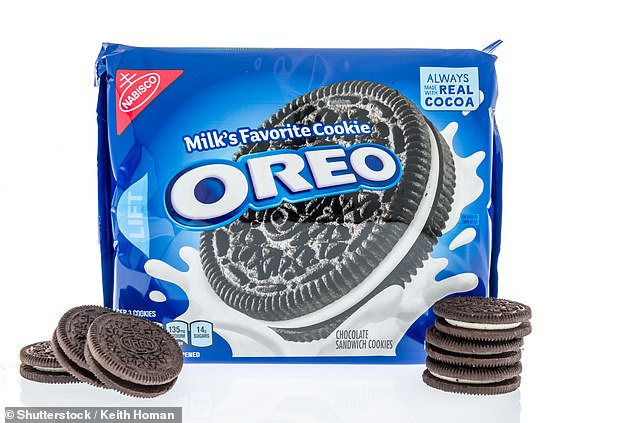Scientists at the Massachusetts Institute of Technology (MIT) have found that twisting Oreos apart can result in uneven distribution of the filling, but the “Oreometer” device they developed can help separate Oreos evenly. They also suggested biscuit makers could provide wafers with through-holes or textures on the inner surfaces to promote cream-to-wafer adhesion on both halves. Meanwhile, researchers at Oxford University recommend picking up Chocolate Digestives chocolate-side up but flipping them before eating to maximize the “oral-somatosensory experience” of chocolate melting on the tongue.
Scientists Discover the Best Way to Eat Oreos
When it comes to enjoying a chocolate chip cookie, there are various ways to do it. You can dip them in milk, eat them in one bite, or lick off the filling. Oreos, the sandwich cookie with a cream filling, are no exception to this debate. The cookie’s slogan, “spin, lick, dip,” became popularized in an Oreo ad campaign, encouraging consumers to split the cookie in half, lick off the cream, and then dip the remaining waffles in milk before consumption. However, this method can result in a waffle with no cream, which is not ideal.
Thankfully, scientists at the Massachusetts Institute of Technology (MIT) have discovered the best way to separate an Oreo to ensure even distribution of the filling. The team used their specially designed device, the “Oreometer,” to spin both waffles of an Oreo in opposite directions at different speeds until the cookie broke in half in the middle.
Crystal Owens, a graduate student in mechanical engineering, shared that she used to get annoyed with twisting the Oreo apart and shoving the cream from side to side. The researchers found that the filling sticks to an Oreo wafer about 80% of the time, regardless of flavor and filling level. Additionally, dipping the biscuit in milk before turning it made things worse, causing it to crumble into pieces after only a minute of exertion.
The scientists discovered that the minimum force required to split an Oreo by turning it is about the same as that required to turn a doorknob. There is also a relationship between the speed of rotation and the force required to achieve a clean break. If the Oreos spin faster, it takes more effort and stress to break them, according to Ms. Crystal Owens.
The Oreometer device, inspired by the rheometer, was used to visually check how much cream was left on each wafer. The researchers sacrificed over 1,000 Oreos of various flavors and filling levels to the Oreometer for their study. The results were published in Physics of Fluids.
In conclusion, the best way to eat Oreos is to turn them instead of pulling them apart. By using the Oreometer device, the filling can be evenly distributed on both waffles. It was found that dipping the cookie in milk before turning it can cause it to crumble. So, if you’re an Oreo fan, you can now enjoy your favorite cookie without the fear of missing out on the filling.
Scientists Reveal How to Perfectly Split an Oreo
For many, Oreos are the perfect snack, and there are various ways to eat them. You can dip them in milk, eat them in one bite, or twist them apart to lick off the filling. However, twisting Oreos apart can lead to uneven distribution of the filling, and the cream often comes off one side. This is where the scientists at the Massachusetts Institute of Technology (MIT) come in. They have developed a device, called the “Oreometer,” which can perfectly split an Oreo while ensuring even distribution of the filling.
The researchers used their specially designed device to spin both waffles of an Oreo in opposite directions at different speeds until the cookie broke in half in the middle. They found that regardless of the filling level or flavor, the bulk of the filling would stick to one side about 80% of the time, making the traditional twist-and-lick method ineffective.
The team discovered that the minimum force required to split an Oreo by turning it is about the same as that required to turn a doorknob. There is also a relationship between the speed of rotation and the force required to achieve a clean break. If the Oreos spin faster, it takes more effort and stress to break them. The scientists tested the cookies by hand, but there was no combination of anything they could do by hand or in the rheometer that changed the results.
The scientists also found that dipping the biscuit in milk before turning it made things worse, as they crumbled into pieces after only a minute of exertion. Therefore, the best way to perfectly split an Oreo is to turn it instead of twisting it.
The team found that in most cases, the cream stuck to the waffle facing the inside of the box it came in, rather than the nearest edge of the box. They theorize that environmental influences, such as ambient heat or mechanical disturbances, can affect the biscuits in individual boxes and have the greatest impact on biscuits near the perimeter. These factors can cause the filling to easily detach from the waffle to which it will adhere less strongly, which can be decided during the making of the cookie.
Crystal Owens, a graduate student in mechanical engineering, said that videos of the manufacturing process show that they lay down the first waffle and then put a scoop of cream on top of that waffle before putting the second waffle on top. Apparently, this small time delay can ensure that the cream adheres better to the first waffle.
In conclusion, splitting an Oreo by twisting it is not the best way to enjoy the cookie. Instead, turning it will result in a perfectly split cookie with even distribution of the filling. Furthermore, dipping the cookie in milk before turning it can cause it to crumble. So, if you’re an Oreo fan, take your time, slow down, and enjoy your favorite cookie with perfectly split halves and even filling distribution.
Researchers Suggest Solution to Oreo Splitting Problem
A study conducted by scientists at the Massachusetts Institute of Technology (MIT) has found that twisting Oreos apart can result in uneven distribution of the filling. The team developed their own device, the “Oreometer,” to spin both waffles of an Oreo in opposite directions at different speeds until the cookie broke in half in the middle. The scientists found that the minimum force required to split an Oreo by turning it is about the same as that required to turn a doorknob. They also discovered that dipping the biscuit in milk before turning it made things worse, causing it to crumble. The team suggested that biscuit makers could provide wafers with through-holes or textures on the inner surfaces to promote cream-to-wafer adhesion on both halves.
In addition to its potential impact on the biscuit industry, the study’s methods could have wide-ranging applications to understand other torsional events in the kitchen, such as plaiting bread and stirring dough.
Oxford University Researchers Settle Chocolate Digestives Debate
Researchers at Oxford University have settled the debate surrounding how to eat Chocolate Digestives. They recommend picking up the biscuits chocolate-side up but flipping them before eating. This method allows the brain to register the chocolate coating, while flipping before eating maximizes the “oral-somatosensory experience” of chocolate melting on the tongue.
Don’t miss interesting posts on Famousbio










